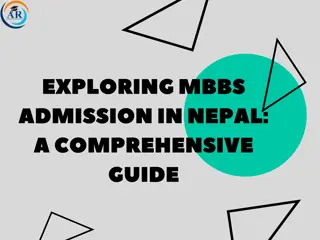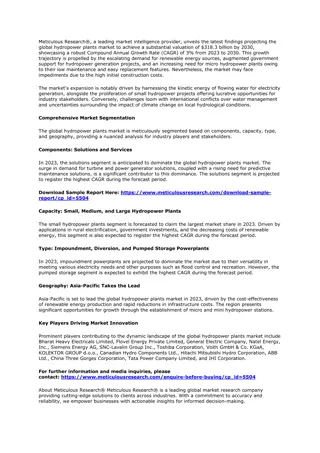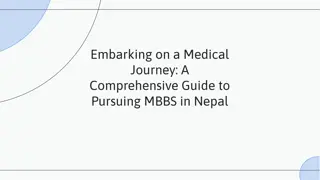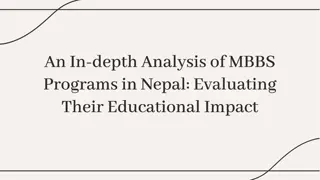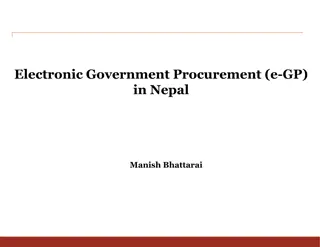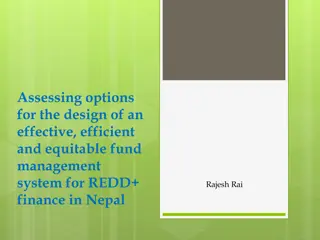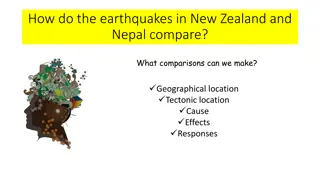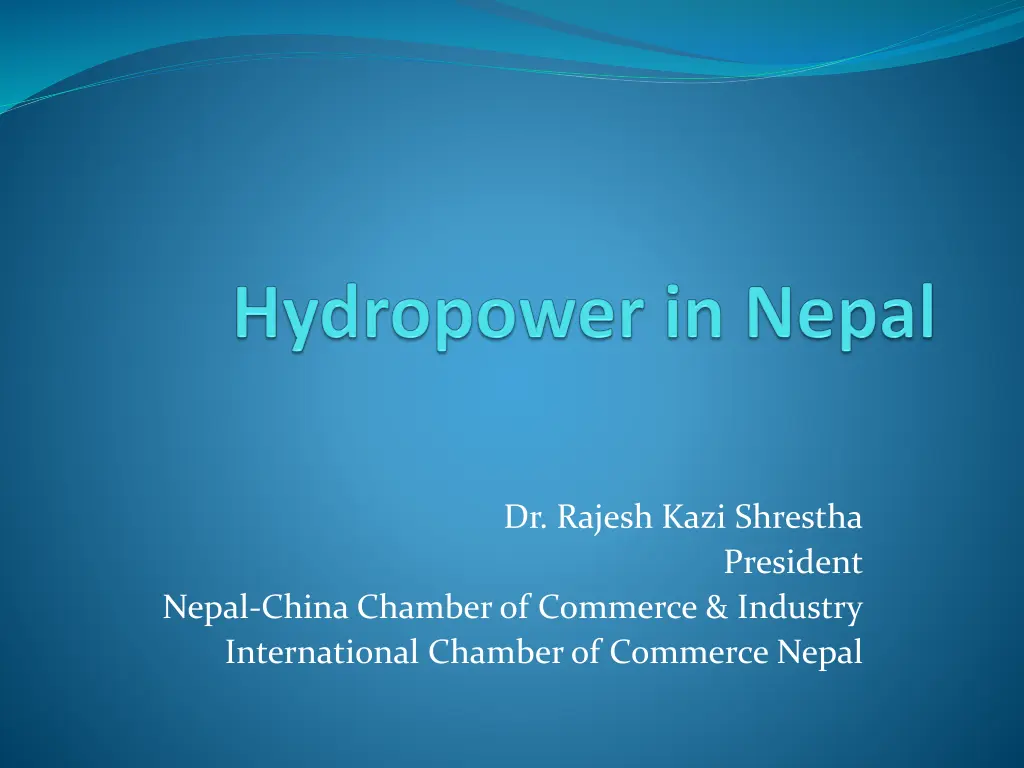
Hydropower Profile and Energy Sector of Nepal
Discover the hydropower potential and energy landscape of Nepal, including major rivers, institutional arrangements, and policy documents guiding energy production. Learn about the challenges and initiatives in the country's journey towards sustainable energy development.
Download Presentation

Please find below an Image/Link to download the presentation.
The content on the website is provided AS IS for your information and personal use only. It may not be sold, licensed, or shared on other websites without obtaining consent from the author. If you encounter any issues during the download, it is possible that the publisher has removed the file from their server.
You are allowed to download the files provided on this website for personal or commercial use, subject to the condition that they are used lawfully. All files are the property of their respective owners.
The content on the website is provided AS IS for your information and personal use only. It may not be sold, licensed, or shared on other websites without obtaining consent from the author.
E N D
Presentation Transcript
Dr. Rajesh Kazi Shrestha President Nepal-China Chamber of Commerce & Industry International Chamber of Commerce Nepal
Hydropower profile of Nepal Nepal is known to be top nation of the world in terms of water resources but the reality is we are still living in dark and we are currently passing through the severe energy crisis. Each year, load shedding is increasing. Major Rivers
Hydropower Profile There are about six thousand big and small rivers in three major river basins namely Koshi, Gandaki and Karnali More than 6000 rivers originated from Nepal flows to India. Hydropower projects are under construction from 3000 M High elevation to as low 500 m Farping Hydropower Plant commissioned in 1911, 100 yrs of History Estimated water storage potential = 88 billion m3 Estimated theoretically potential hydropower = 85,000MW 43 000 Estimated Technically viable Hydropower = 43,000 MW Present Status of Energy - Hydro : Government of Nepal (GON) 478MW Installed capacity 645 MW - Thermal: Installed Capacity 53MW (GoN) - Solar: 200 Kw (2 x 100) Electricity Access to people 42% of Population
Institutional Arrangements A number of institutions exist in the energy sector. a) Ministry of Energy, b) Ministry of Forests and Soil conservation, c) Ministry of Agriculture and Co-operatives d) Ministry of Commerce and Supplies, e) Ministry of Environment and Ministry of Industry f) Nepal Investment Board Commissions: a) National Planning Commission b) Water and Energy Commission c) Corporation and Others d) Nepal Electricity Authority
Policy Documents The following have been major policy documents guiding energy production, development, utilization and regulation Development Plan Until 1990, hydropower development was under the domain of government utility From 1992, hydropower development was opened for private sector New policy seek investment by private sector and expand electrification within the country and export Hydropower Development Policies 1992 and 2001, Water Resources Act 1992, and Electricity Act 1992 Water Resources Strategy 2002 and National Water Plan 2005 National Electricity Crisis Resolution Action Plan 2008 Rural Energy Policy 2006 Foreign Investment and Technology Transfer Act - 1992 Environment Protection Act - 1996 (Regulation-1997) Nepal Government s policy and plan of 10,000 MW in 10 years (2010-2020) and 25,000 MW in 20 years (2010-2030)
Opportunities High potential for Ponding type of Projects: Upper Karnali West Seti Burhi Gandaki Pancheswar Interested foreign investors More and more Chinese and Indian investors are interested to invest in Hydropower projects High flow in rivers - Himalaya is the source of most rivers of Nepal. High demand in local market High potential demand in Regional Market Highly populated areas of India and Bangladesh are located near to Nepal. Electricity market is available. Surplus energy can be exported. Clear financial incentives Exemption of corporate tax for 7 years and 50 % for next 3 years Exemption of VAT on machines, equipments Private/foreign investor favorable policy of Government Environmental risk free after construction
Installed Capacity Description Total Grid Connected Hydro Power Diesel Plants (Thermal)- Capacity Peaking Capacity Import from India Peak Demand Deficit - Wet Season Deficit - Dry season (January-June) * Nepal Electricity Authority Report, 2010 Capacity (MW) 698 53 668 150 885 -217 (885-668) -685 (885-200) 698 MW is installed capacity, in dry season only about 200 MW electricity produced, more than 14 hrs Load shedding in dry season
Conclusion Hydropower is the prominent sector for investment in Nepal It is the only sector which take place in least developed and remote areas. It leads to development of road and creates many economic opportunities to local people. Recent years we can see lot of foreign investors who are willing to invest in Nepal. Government should focus on common minimum agenda for hydropower development with favorable policies.




